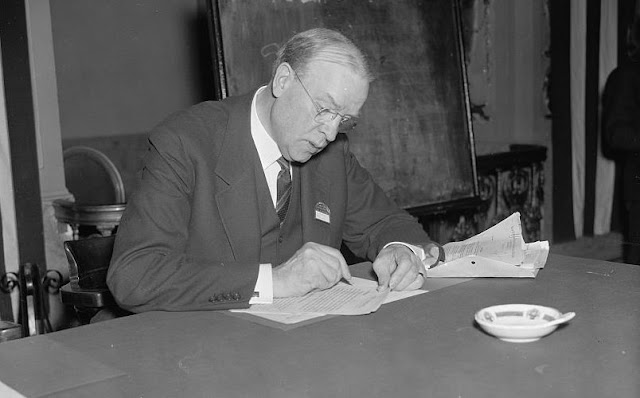East Boston Native Frederick W. Mansfield, Son of Irish Immigrants, was Boston's 40th Mayor, 1934-37
Photo Courtesy of Library of Congress
Frederick W. Mansfield was the fortieth mayor of Boston (1934-37) as well as a prominent attorney and leader in the Catholic community.
Born on March 26, 1877 in East Boston, he was the son of immigrant Irish parents Michael and Catherine (McDonogh) Mansfield. He served in the US Navy during the Spanish American War of 1898. He studied law at Boston University Law School and received his LL.B. degree in 1902 and was admitted to the US and Mass bars the same year.
In 1914 he was elected state treasurer, the first democrat to hold that office. He ran unsuccessfully for governor in 1917 and 1917. He ran for mayor in 1929, having been endorsed by the Good Government Association, and was beaten by James M. Curley. Four years later Mansfield defeated Malcolm E. Nicols for mayor and served from 1934-37. He was succeeded by Mayor Maurice J. Tobin, who served from 1938-44.
According to the Boston City Archives, Mansfield “led the city in the midst of the Great Depression. Though disadvantaged by a mounting welfare burden and rampant unemployment, Mansfield was able to bring about significant changes to Boston.” Among his achievements, and funds from the federal Works Progress Administration, Mansfield launched the Huntington Avenue subway extension, Huntington avenue underpass, and upgrades to various city parks. His administration funded the City Hospital surgical building, reconstruction of Faneuil Hall and the opening of seven new schools.
Mansfield received many awards and positions in the Catholic Church. He was the attorney for the Archdiocese of Boston, and a trustee of St. Elizabeth Hospital. He held the distinction of being a Knight of the Equestrian Order of the Holy Sepulcher of Jerusalem.
Mansfield was a labor advocate throughout his life. He served as counsel for the state branch of the AFL and for independent unions. He lectured on labor relations from 1940-1945 at the BU law school. He lived at 96 Bay State Road in Boston’s Back Bay.
On November 7, 1958, Mansfield died at St. Elizabeth Hospital in Brighton after a long illness. His former nemisis James M. Curley said in a statement, “It is with deep regret that I learned of (Mansfield’s) passing. The city has lost a very able administrator and an outstanding attorney.” Curley died six days later.
Mansfield is buried at Holyhead Cemetery in Brookline along with other notable Irish-Americans, including governors, mayors and members of the Kennedy Family.
A collection of Mansfield's papers are held at the City of Boston Archives.




Comments
Post a Comment